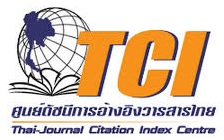The Development of the English Content-Based Reading Materials for Buddhist Student Monks
DOI:
https://doi.org/10.55766/VIME7423Keywords:
Content-based instruction, English reading materials, Materials development, Buddhist monksAbstract
The objectives of this study were 1) to develop the English content-based reading materials for Buddhist student monks, 2) to explore quality of the English content-based reading materials by examining the attitude of student monks, and 3) to explore quality of the English content-based reading materials by examining the attitude of teachers. The study was conducted in 6 stages starting from the identification of needs to create materials to the evaluation of the effectiveness of the developed materials. The participants of 42 student monks and 3 English teachers were selected from the Education Department of Wat Phra Dhammakaya in academic year 2017. Instruments used were semi-structured interview, needs analysis questionnaires, and evaluation questionnaires. The qualitative data was analyzed by the content analysis. The statistics used to analyze the quantitative data were frequency, percentage, mean, and standard deviation. The findings revealed that the English content-based reading materials for Buddhist monks were effectively developed by using the materials development framework of Tomlinson (2011), embedded with Six-T’s approach of Stoller and Grabe (2017), and the quality was the academic and physical aspects and the effectiveness in enhancing reading comprehension. In terms of the quality of academic and physical aspects, student monks had a positive attitude towards 6 criteria including: content, organization of content, presentation of content, language use, activities applied, and layout and design, and teachers had a positive attitude towards 7 criteria, 6 of which were exactly the same as those of student monks plus the criterion of the teachers’ manual. This study clearly demonstrates theoretical processes of developing instructional materials of good quality and could be used as an example to illustrate the connection between developing instructional materials and
English language learning research for teachers, materials developers, and researchers in the field.
References
Anderson, N. J. (1991). Individual differences in strategy use in second language reading and testing. The Modern Language Journal. 75(4): 460-472.
Arwae, S. (2013). Developing materials to enhance English reading ability of three southern border provinces of Thailand. M.S. thesis, Chulalongkorn University. 179.
Chawwang, N. (2008). An investigation of English reading problems of Thai 12 th-grade students in Nakhonratchasima educational regions 1, 2, 3, and 7 [Online]. Available: http://thesis.swu.ac.th/swuthesis/Eng(M.A.)/Nongnat_C.pdf
Chetsadanuwat, K. (2012). A development of self-instructional materials (SIMS) to enhance English listening skills for student nurses. M.S. thesis, Chulalongkorn University.
Flesch, R. (1979). How to write plain English: Let’s start with the formula. Canterbury: University of Canterbury.
Kasemsap, B., & Lee, H. Y.-H. (2015). L2 reading in Thailand: Vocational college students’ application of reading strategies to their reading of English texts [Online]. Available: http://www.readingmatrix.com/files/13-p0gvv09k.pdf
Lenz, K. (2005). An introduction on reading comphrehension [Online]. Available: http://www.specialconnections.ku.edu/?q=instruction/reading_comprehension
Ololube, N. P., Kpolovie, P. J., & Makewa, L. N. (2015). Handbook of research on enhancing teacher education with advanced instructional technologies. Pennsylvania: IGI Global.
Liu, C. (2007). A descriptive study of how English is used and learned linguistically and culturally in a Taiwanese Buddhist monastery in Los Angeles. Doctoral Dissertation, The University of Texas at Austin.
Peregoy, S. F., & Boyle, O. F. (2000). English learners reading English: What we know, what we need to know. Theory into Practice. 39(4): 237-247.
Ritthikuksithichai, N. (2011). The development of an English instructional model using the content-based and the task-based instruction to enhance English reading comprehension ability and task performance of engineer students. Doctor Dissertation, Chulalongkorn University.
Shang, H. F. (2015). An investigation of scaffolded reading on EFL hypertext comprehension. Australasian Journal of Educational Technology. 31(3): 293-312.
Short, D., & Echevarria, J. (2004). Teacher skills to support English language learners. Educational Leadership. 62(4): 8-13.
Stoller, F. L., & Grabe, W. (1997). A Six-T’s approach to content-based instruction [Online]. Available: http://carla.umn.edu/cobaltt/modules/curriculum/stoller_grabe1997/6ts.pdf
Stoller, F. L., & Grabe, W. (2017). Building coherence into the content-based curriculum: Six Ts revisited. In M. A.Snow & D. M. Briton (Eds.), The content-based classroom: New perspectives on integrating language and content (pp. 53-66). Ann Arbor, MI: University of Michigan Press.
Tomlinson, B. (2011). Materials development in language teaching. Cambridege: Cambridge University Press.
Tomlinson, B., & Masuhara, H. (2004). Developing language course materials. portfolio series# 11. Singapore: SEAMEO Regional Language Centre.
Zimmerman, A. (2012). Reading - The hidden success factor [Online]. Available: http://www.aitp.org/news/103320/
Downloads
Published
Issue
Section
License
Copyright (c) 2019 Suranaree Journal of Social Science

This work is licensed under a Creative Commons Attribution-NonCommercial-NoDerivatives 4.0 International License.









 ThaiJO
ThaiJO